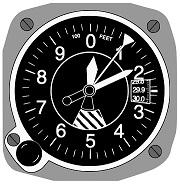A transition altitude is the point where pilots switch from using a local altimeter setting, based on the current air pressure at sea level in their location, to a standard setting of 29.92 inches of mercury (1013.2 hPa).
This standard setting ensures that all aircraft flying at higher altitudes have the same pressure reference, helping to prevent conflicts caused by differences in local air pressure.
Above the transition altitude, aircraft use "flight levels" rather than specific heights, and these levels are based on the standard pressure. In the United States and Canada, the transition altitude is set at 18,000 feet MSL (Mean Sea Level), but in some parts of Europe, it can be as low as 3,000 feet MSL.
Many countries also have a "transition layer," a zone where pilots change their altimeter settings when climbing or descending.
